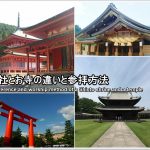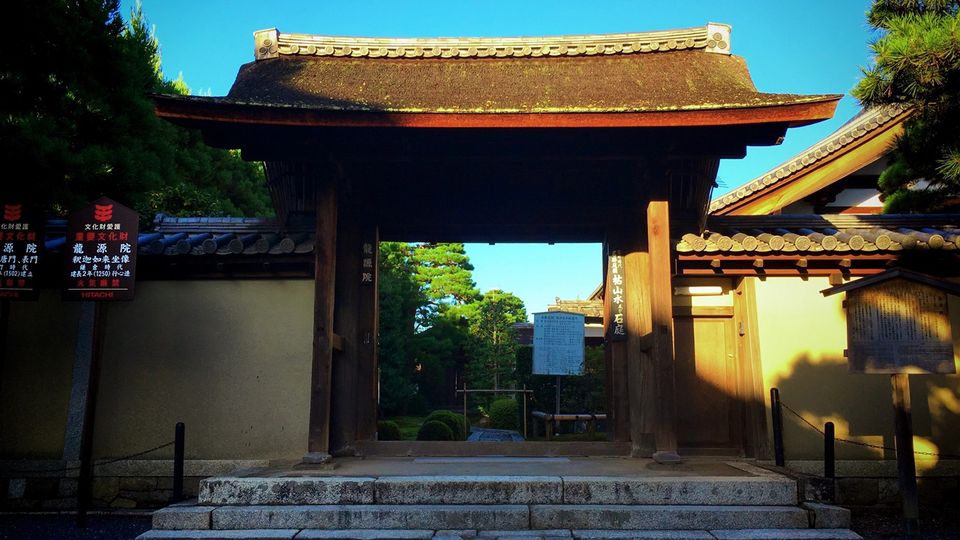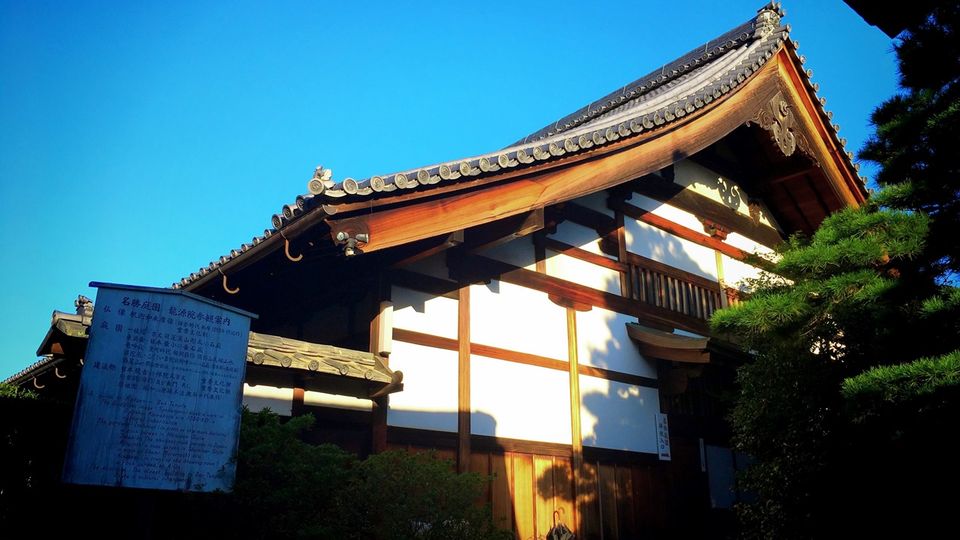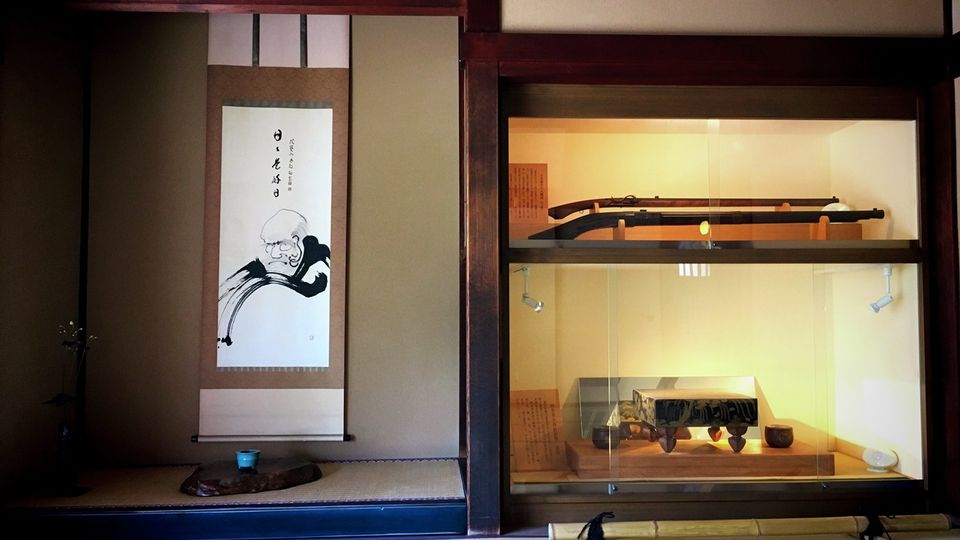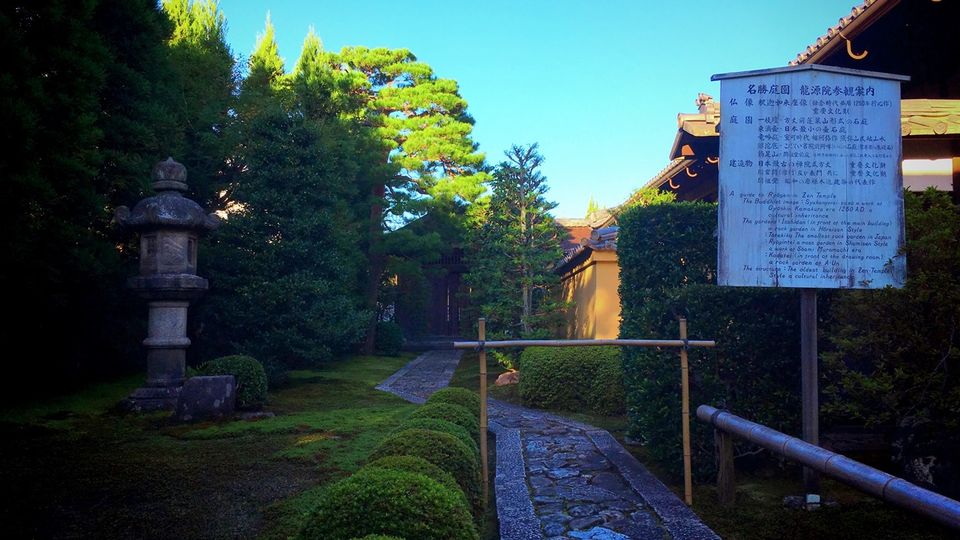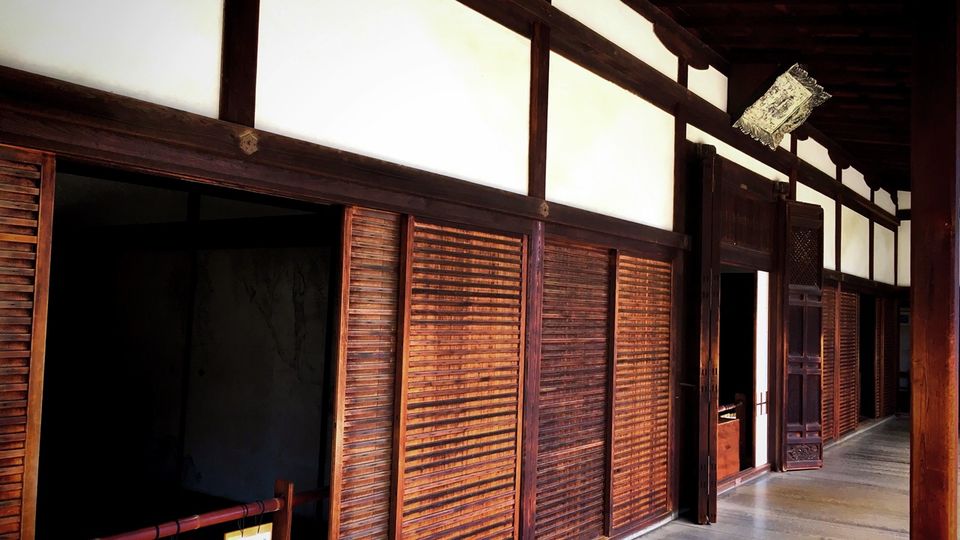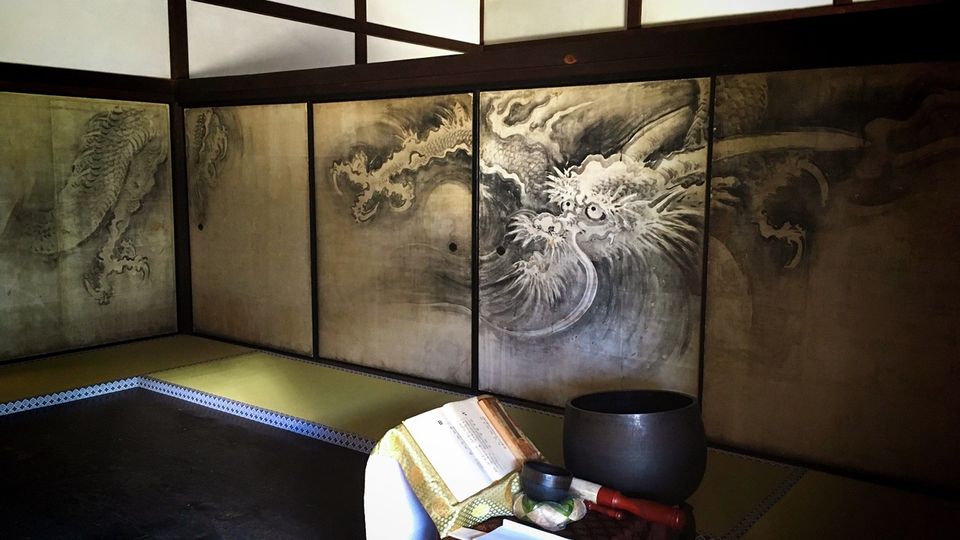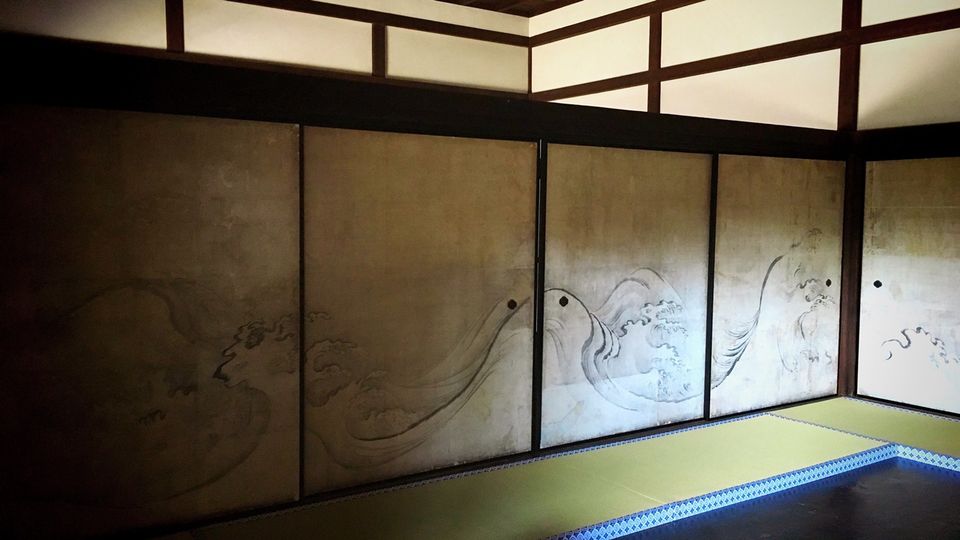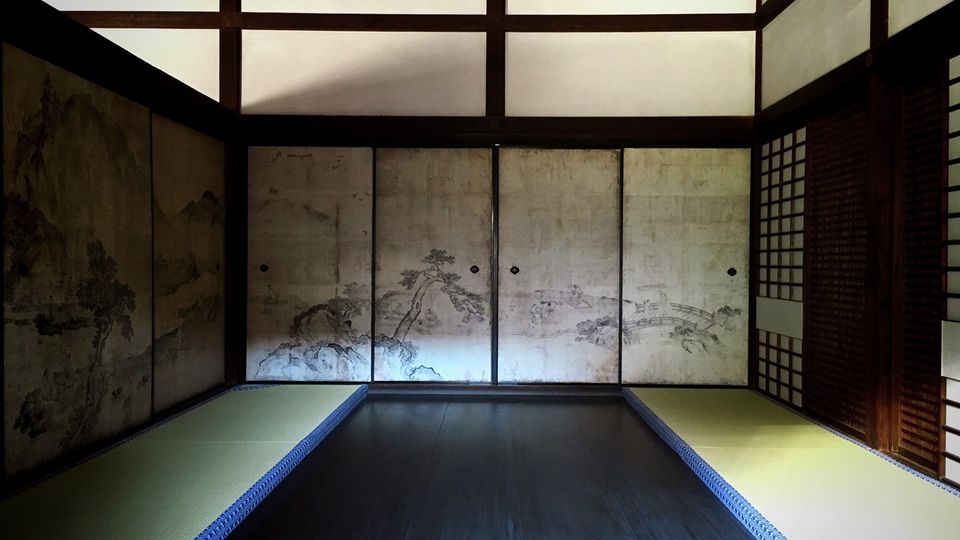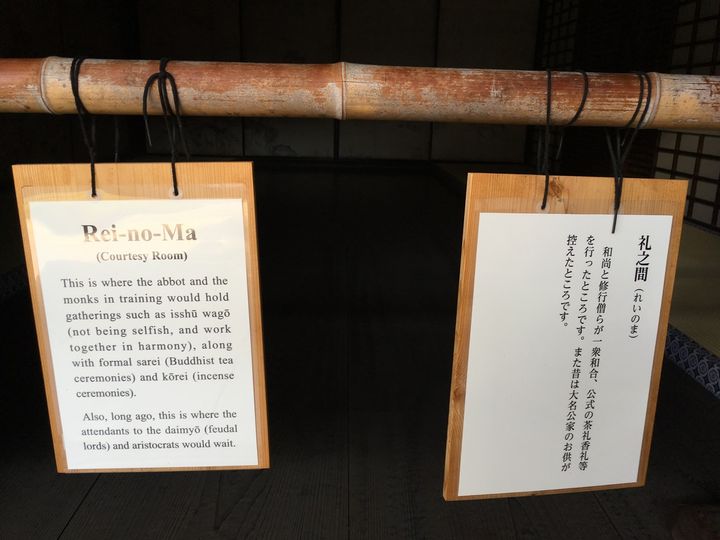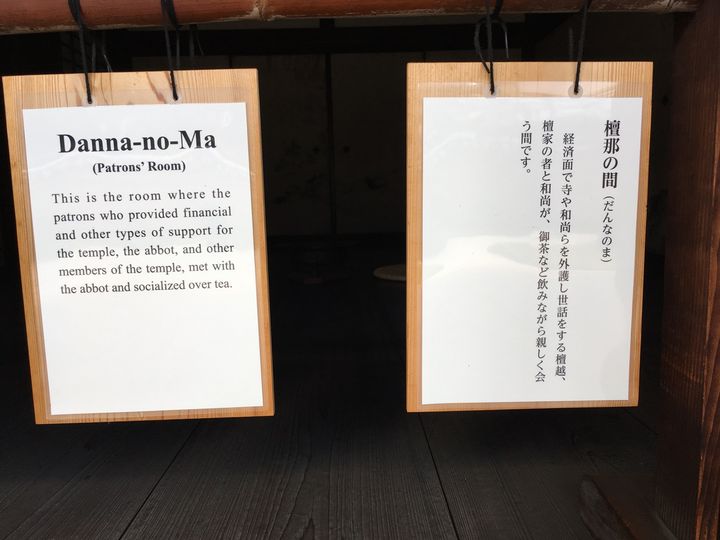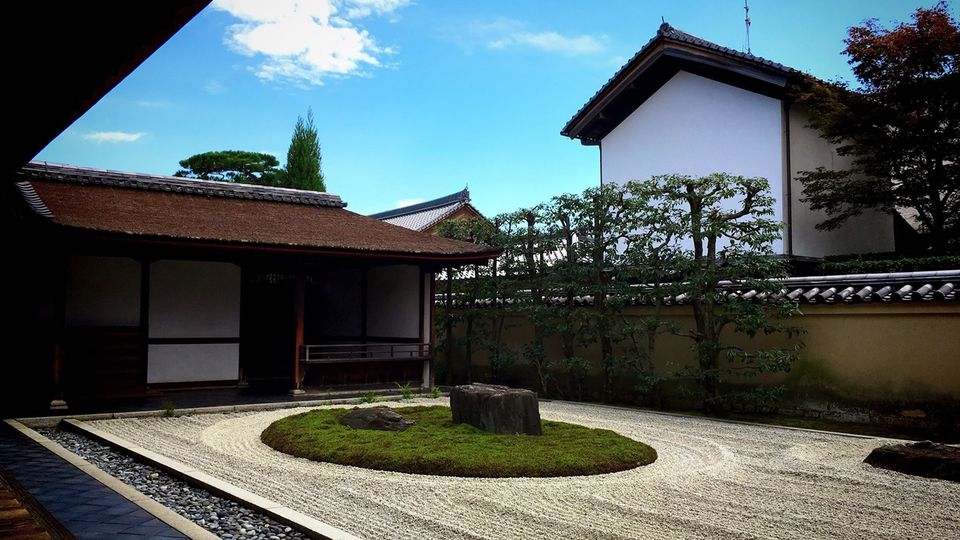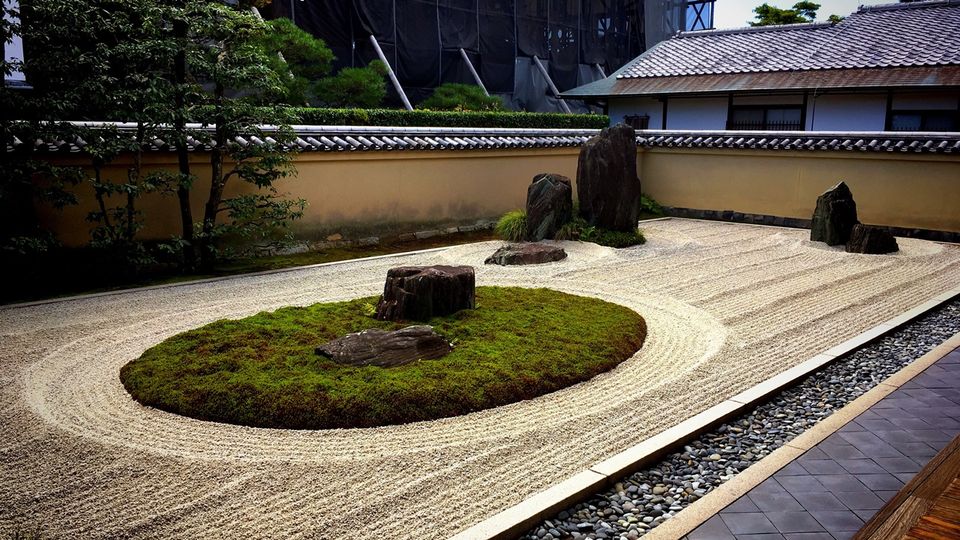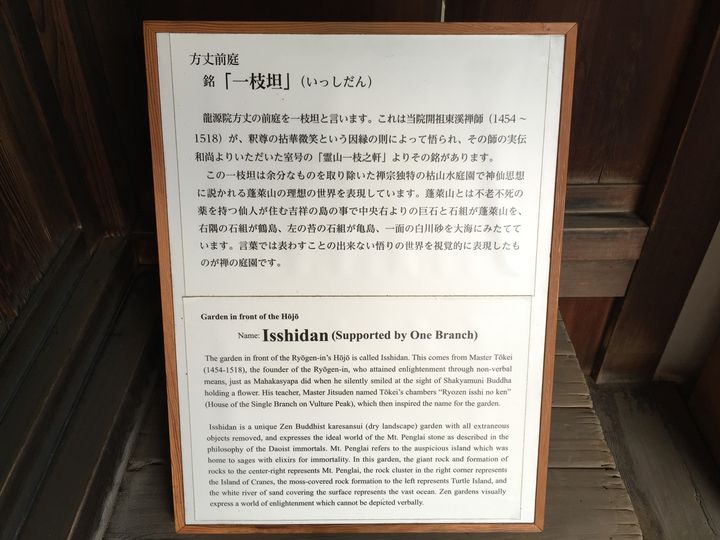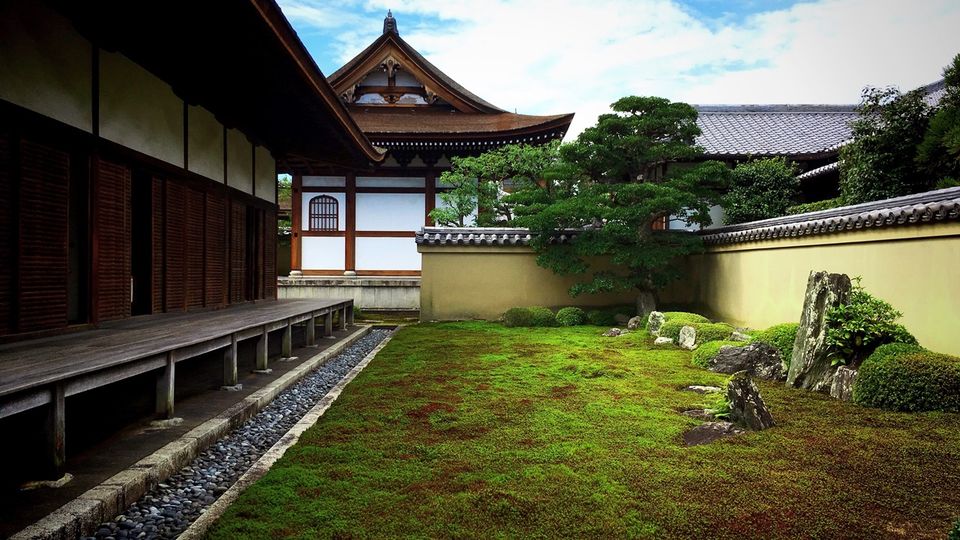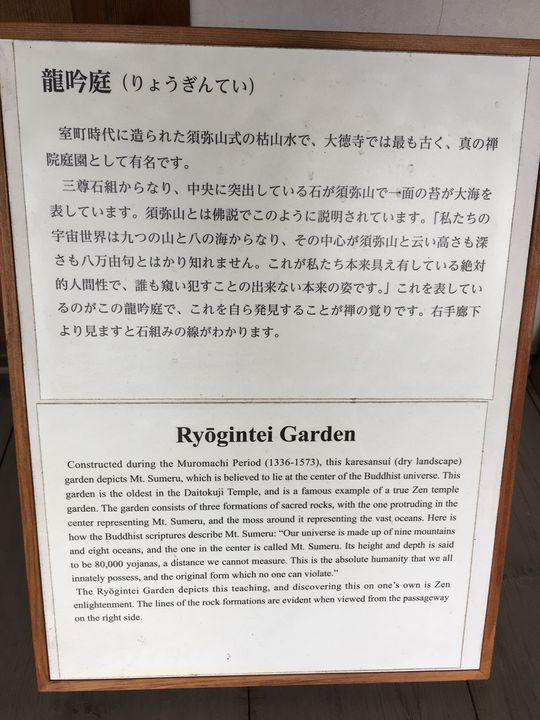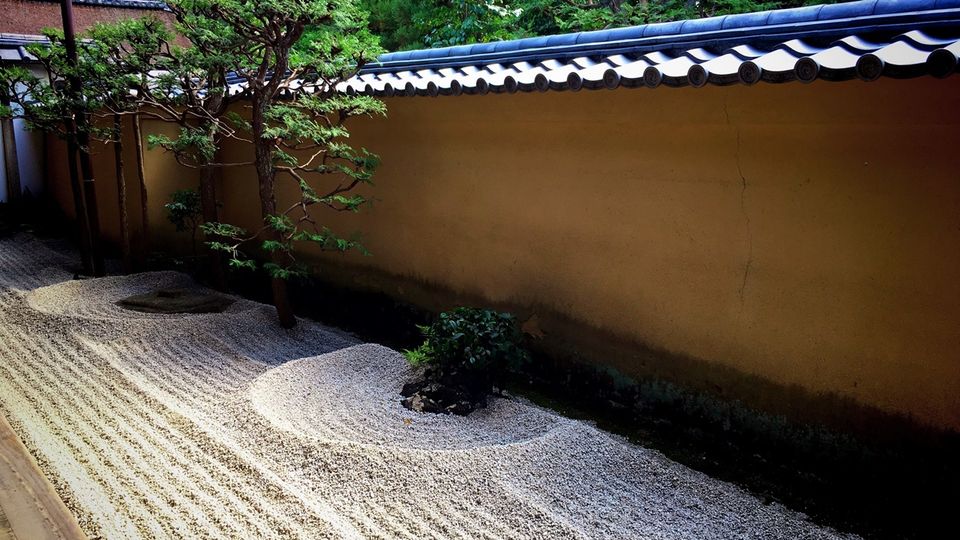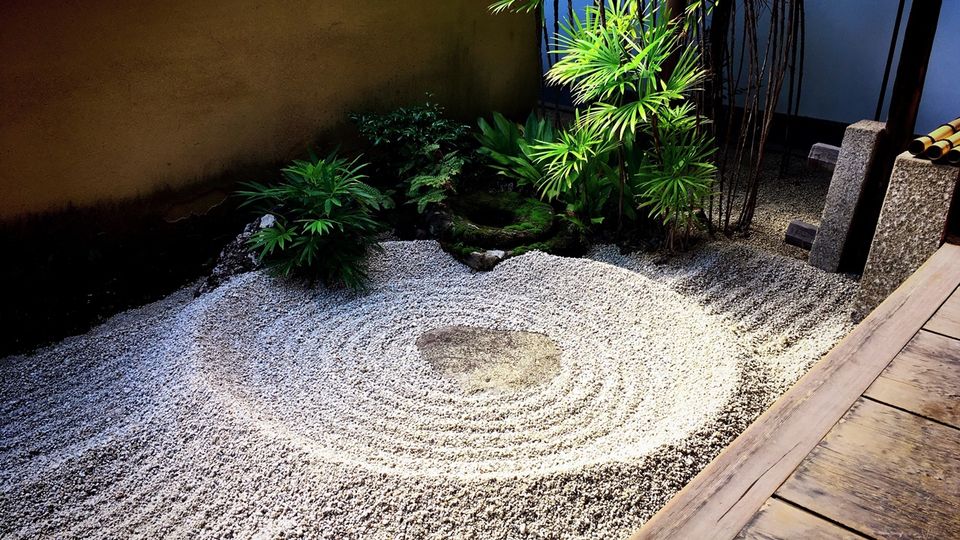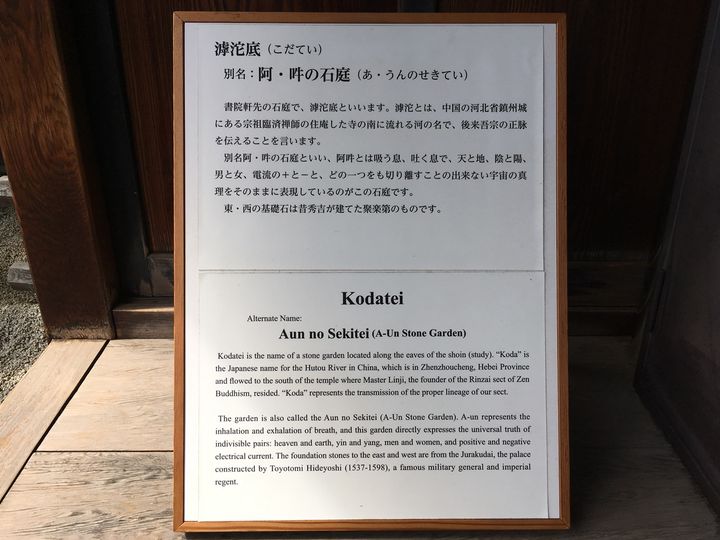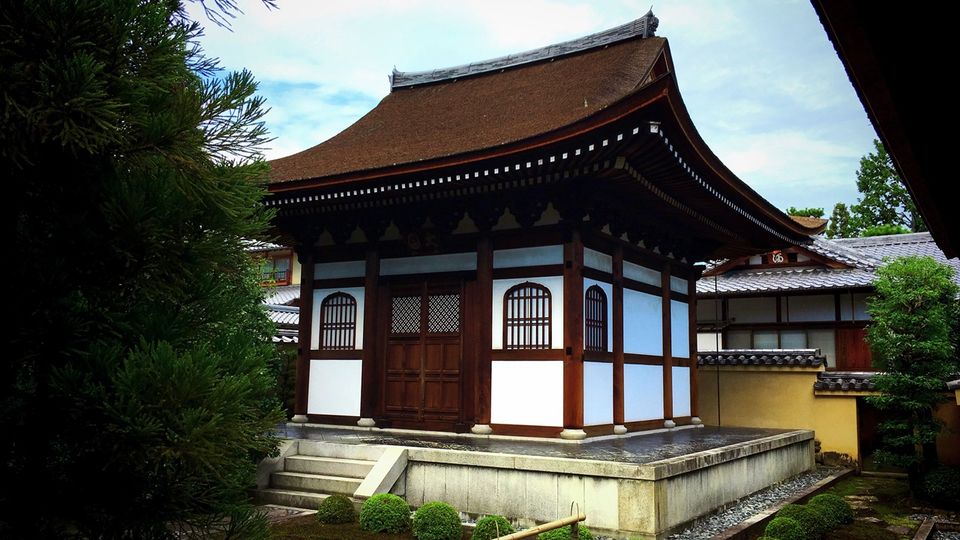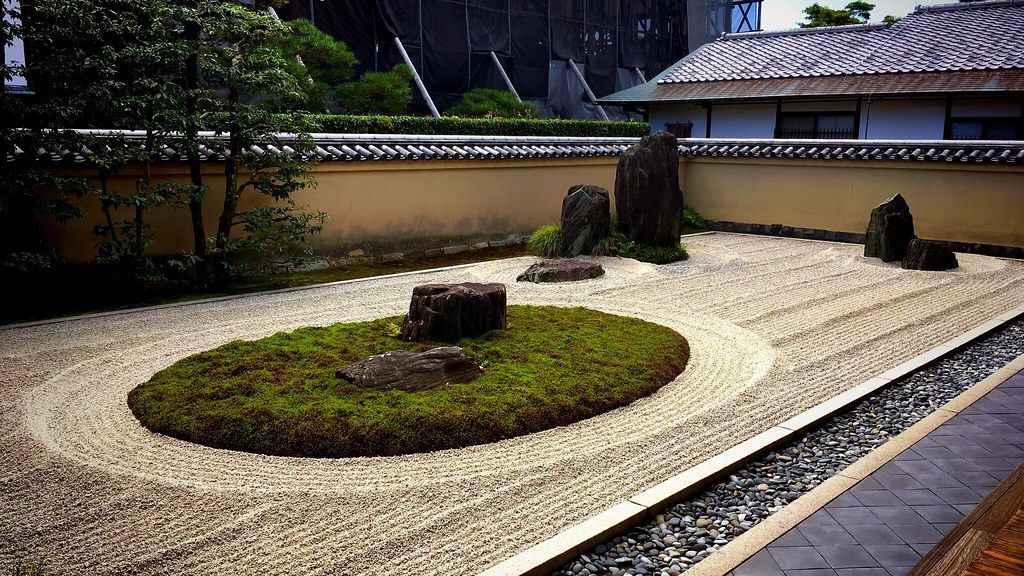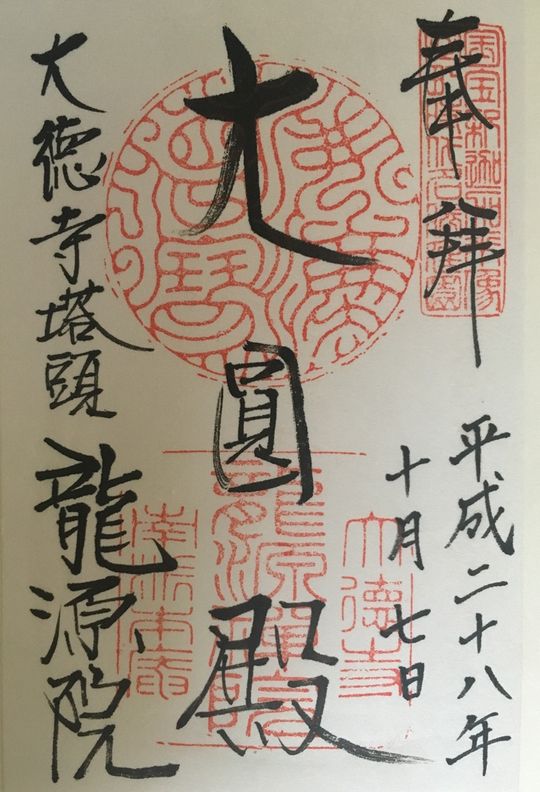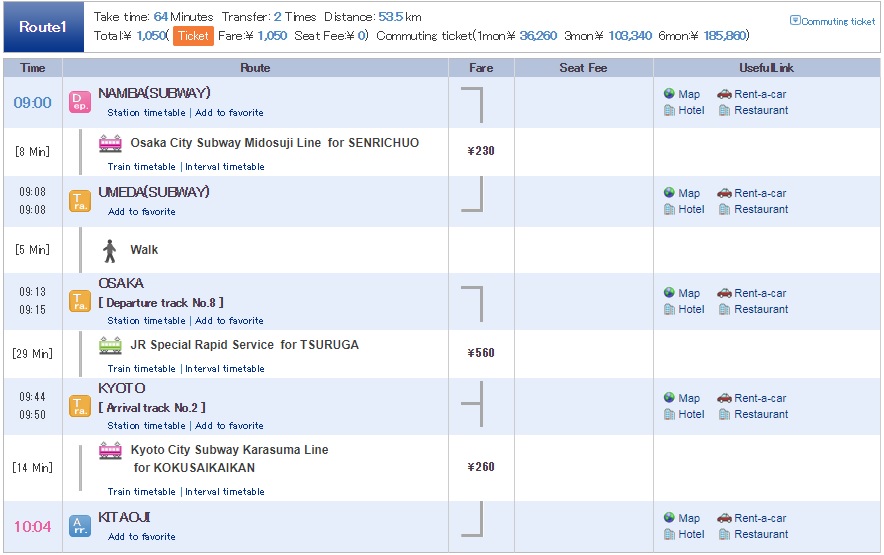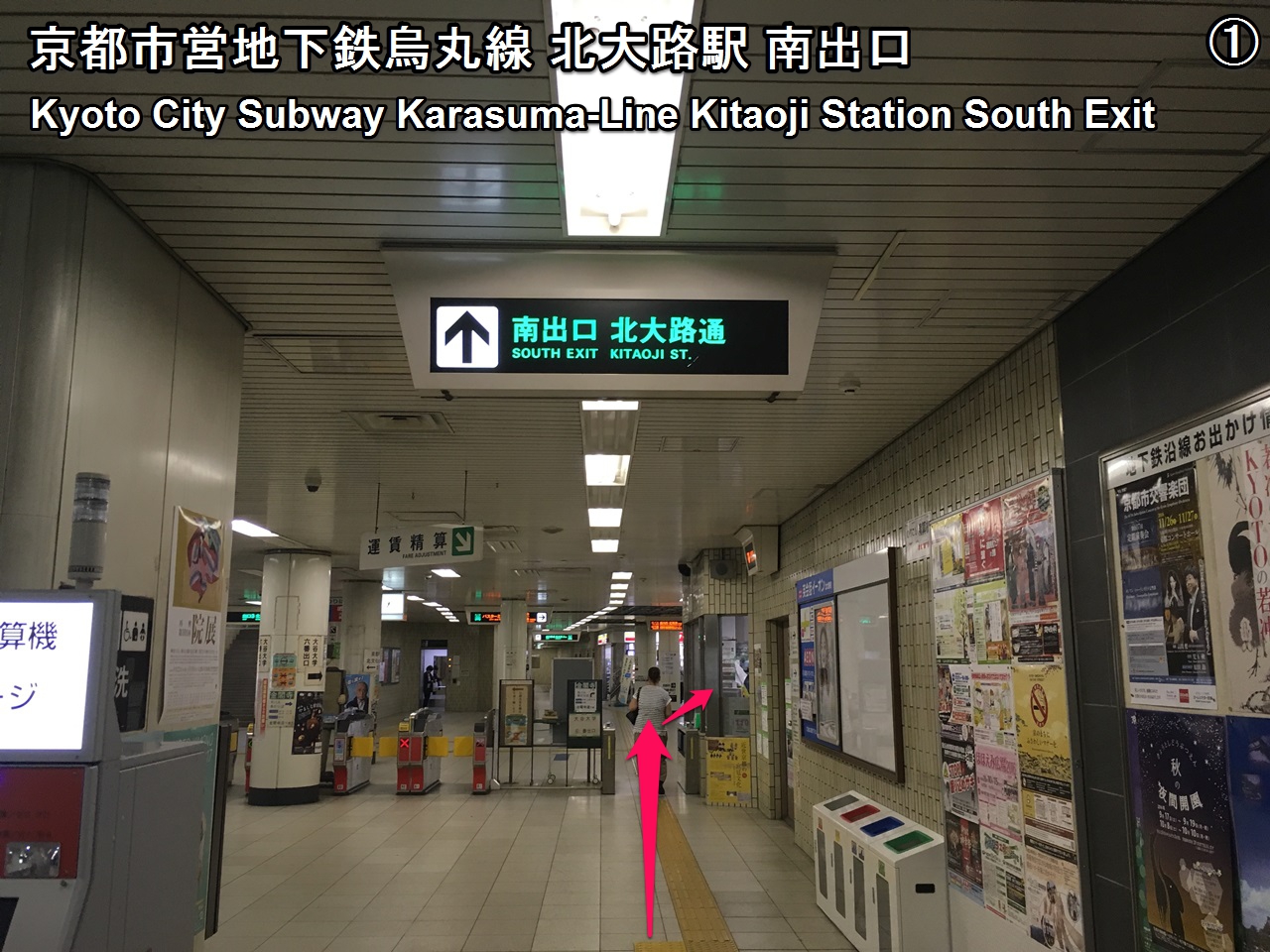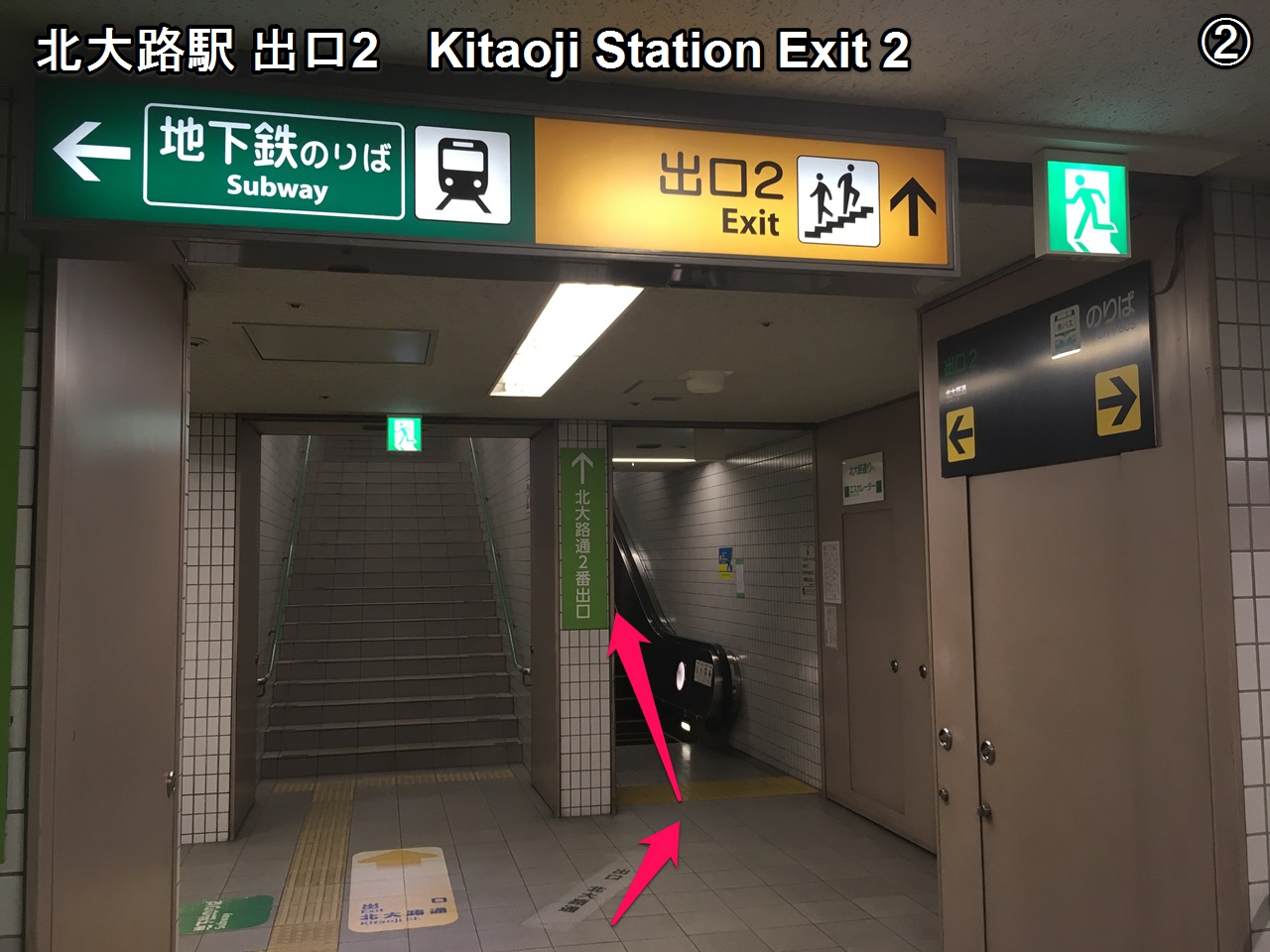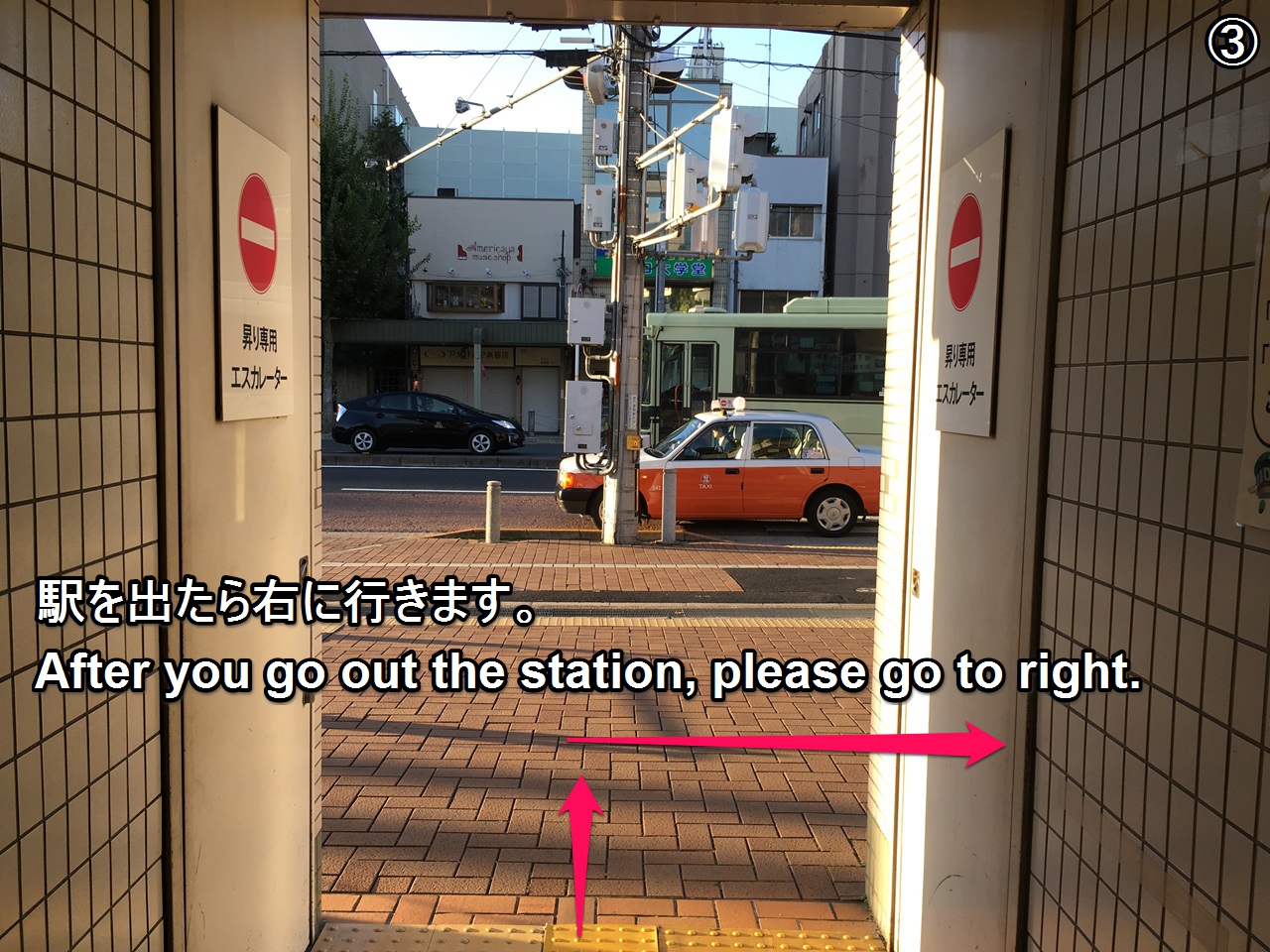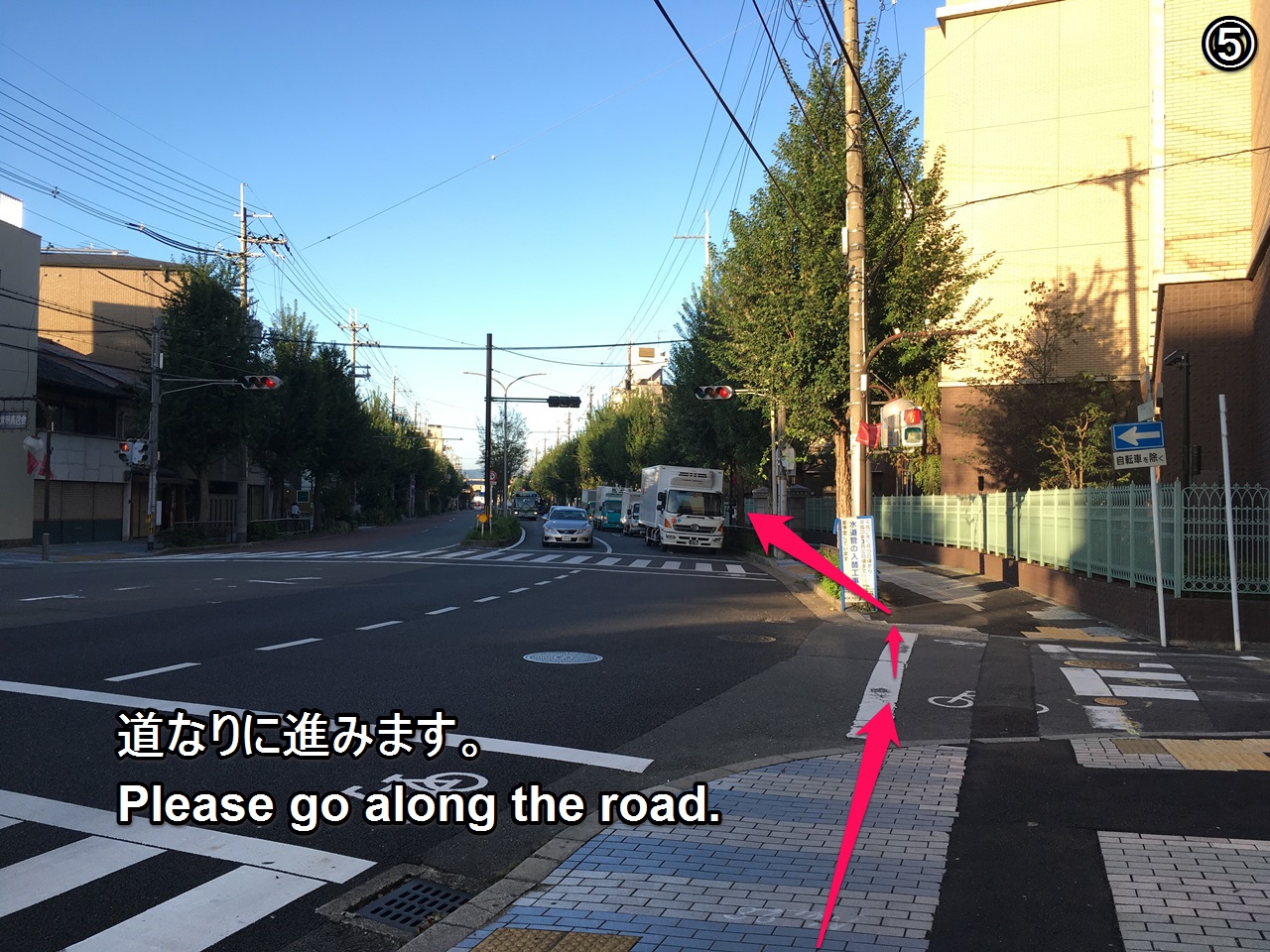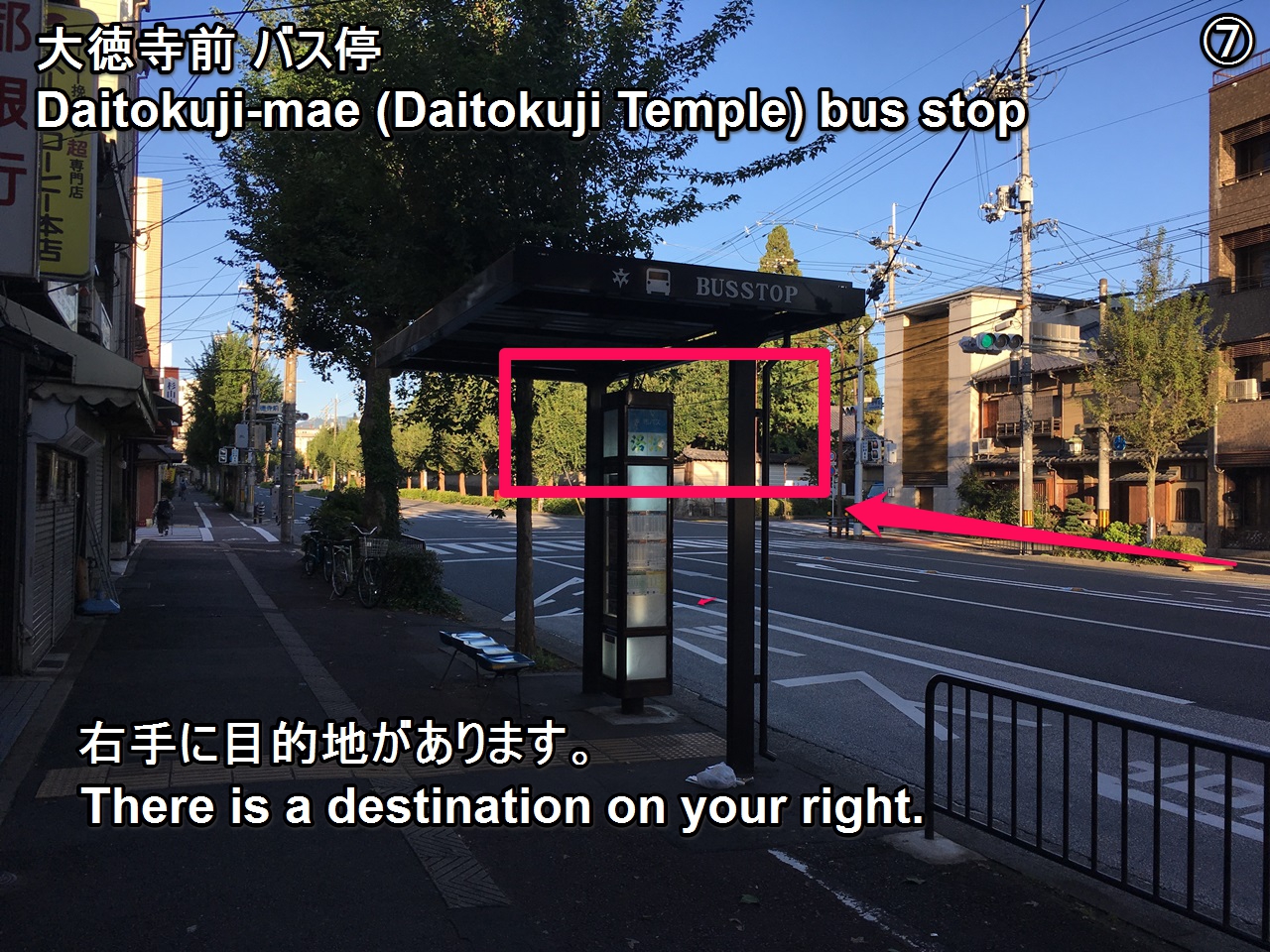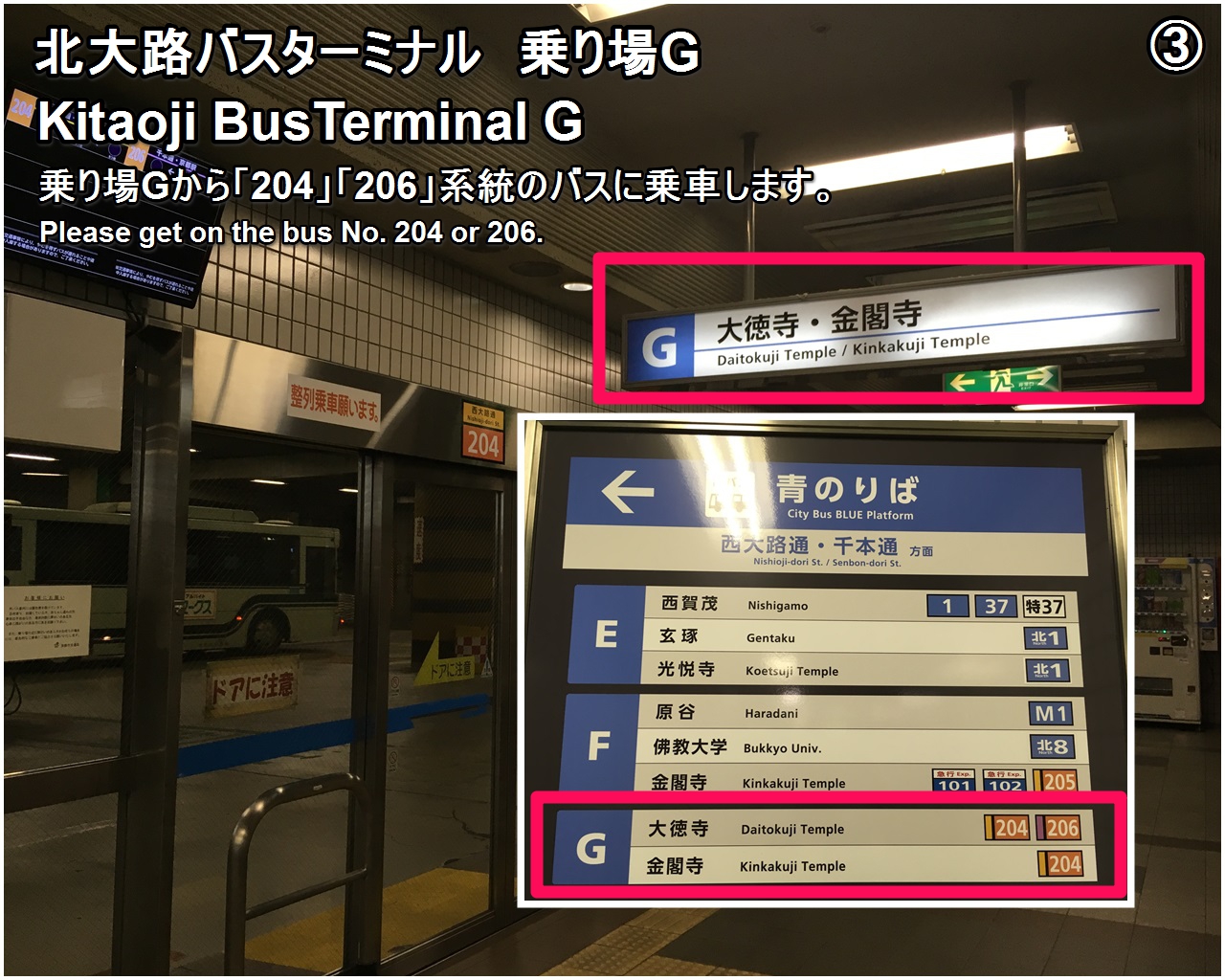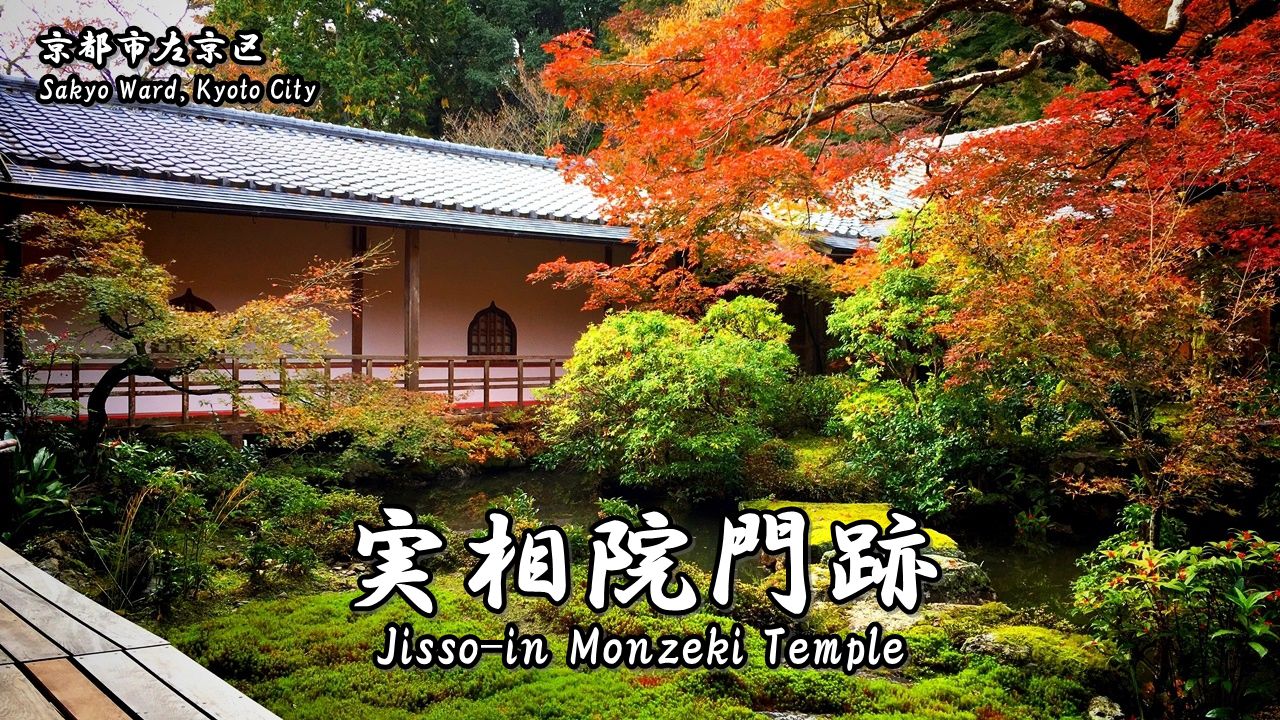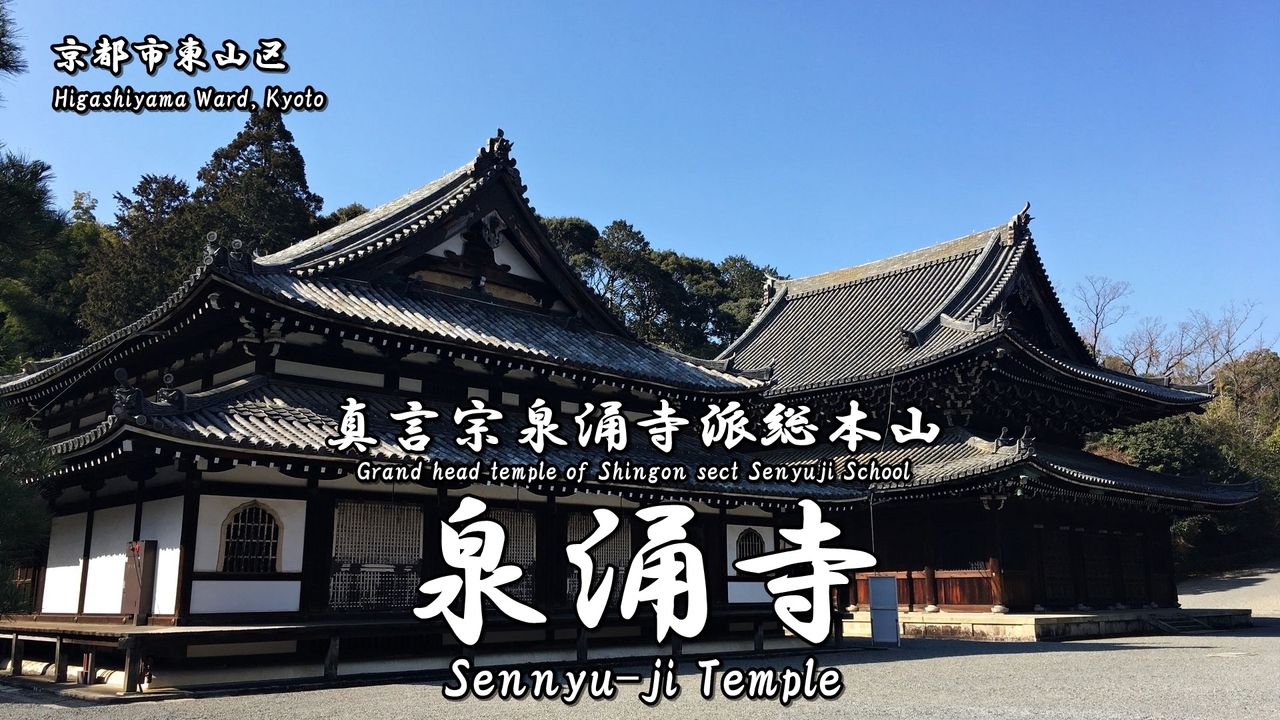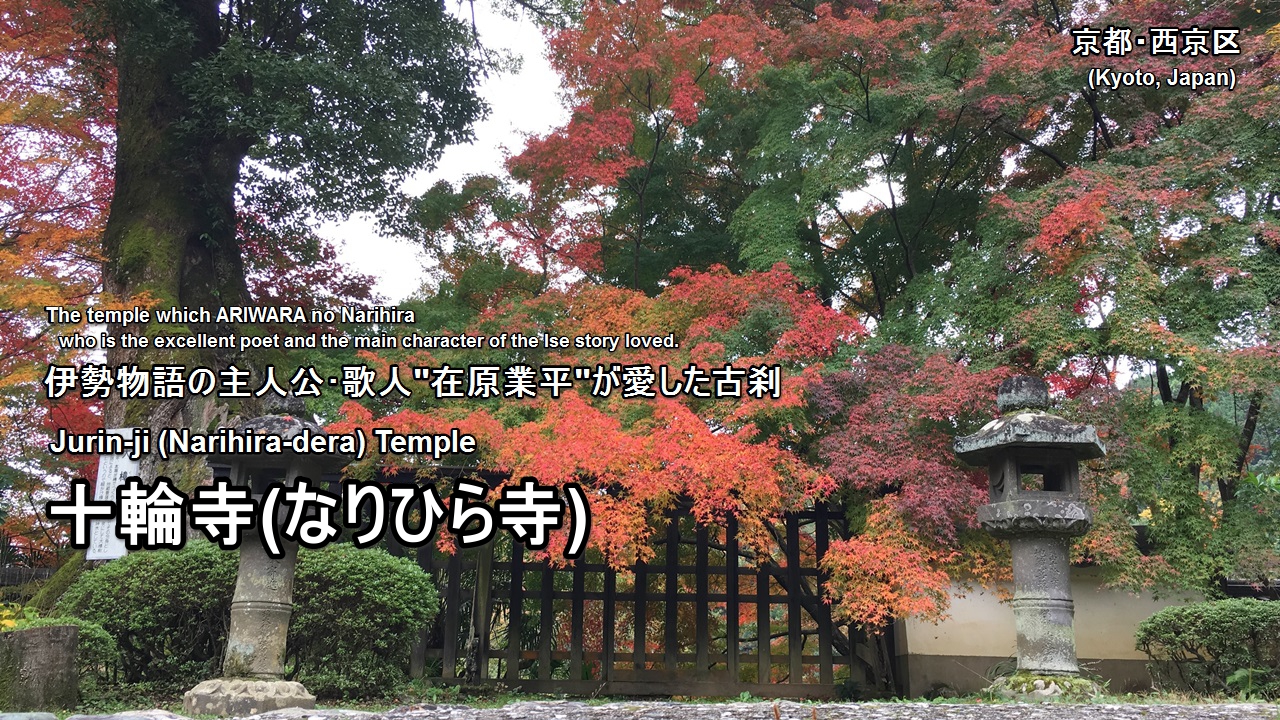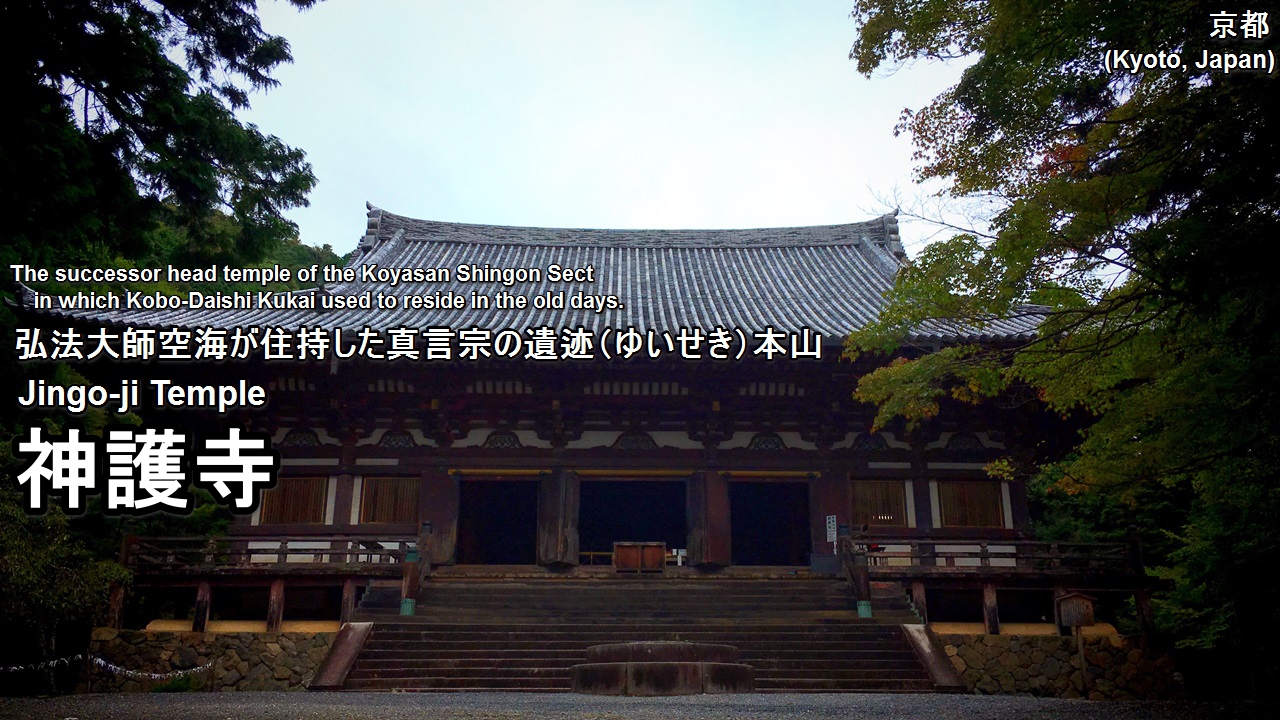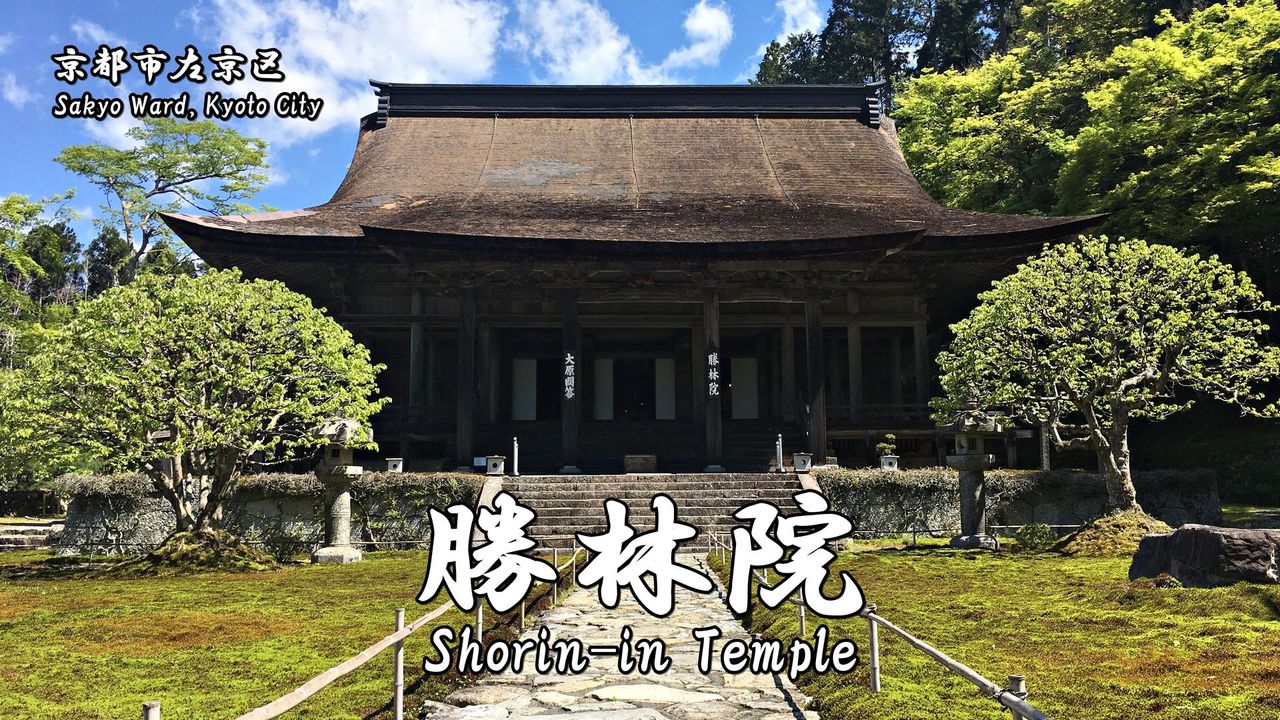Ryogen-in (龍源院) is a temple of the Daitoku-ji school of the Rinzai sect, located in Kita Ward, Kyoto City, and is one of the tatchu (sub-temple) of Daitoku-ji.
Daitoku-ji is one of the most huge zen-temple in Kyoto, and now it has a total of 24 sub-temples.
Among the sub-temples, those that are generally open to the public are Ryogen-in Temple, Zuiho-in Temple, Daisen-in Temple and Koto-in Temple.
Those sub-temples are small temples but have a distinctive charm that big temple does not have.
In addition, they have a history with the deep relationship with their main-temple.
So, when you go to Daitoku-ji, I recommend that you go to these sub-temples.
Because the precincts of this temple and garden are covered with moss, it is also called ‘the Moss Temple of the northern part of Kyoto City’.
It is designated as michelin green guide ★.
History of Ryogen-in
Let’s study the history of this sub-temple with me before introducing of Ryogen-in (龍源院).
I think that we can enjoy the sightseeing of this sub-temple more by learning the history of it. XD
Ryogen-in Temple is the oldest of all Daitoku-ji Temple’s sub-temples was founded by Tokei Soboku (東渓宗牧) in 1502 and established by Yoshimoto HATAKEYAMA (畠山義元) of Noto Province, Yoshioki OUCHI (大内義興) of Suo Province and Yoshichika OTOMO (大友義長) of Bungo Province.
Daitoku-ji Temple has four lineages called Northern lineage (北派), Southern lineage (南派), Shinju lineage (真珠派) and Ryosen lineage (龍泉派).
This temple is the main temple of the Southern lineage of Daitoku-ji Temple whereas Daisen-in Temple is the main temple of the Northern lineage of Daitoku-ji Temple.
Information for visitors
Information
Address:82-1, Murasakino Daitokujicho, Kita-ku Kyoto-shi, Kyoto, 603-8231, Japan
Phone number:+81-75-492-0068
Foundation:1502
Founder:Yoshichika OTOMO (大友義長) , Yoshioki OUCHI (大内義興) , Yoshimoto HATAKEYAMA (畠山義元)
Sect:Daitoku-ji school of the Rinzai sect
Principal image:Shaka Nyorai (釈迦如来)
Open
9:00~16:20
Admission fee
| Adults | 350 yen |
| Junior high students | 250 yen |
| Children | 200 yen |
Other information
・Please ask temple’s staff where you can take photos and videos.
・Worship method of a shinto shrine and a buddhist temple, please refer to the following article.
Next, let’s go to see the highlights of Ryogen-in!!
Highlights of Ryogen-in
- 表門(重要文化財):Omote-mon gate(Important cultural property)
- 書院・庫裏*:Shoin・Kuri*
- 唐門(重要文化財)*:Kara-mon gate(Important cultural property)*
- 方丈(重要文化財)*:Hojo(Important cultural property)*
- 方丈前庭 ‘一枝坦’*:Front garden ‘Isshidan’*
- 竜吟庭*:Ryogintei garden*
- 滹沱底*:Kodatei garden*
- 東滴壺*:Totekiko garden*
- 開祖堂及び前庭*:Kaiso-do hall and Front garden*
This mark ‘*‘ is a pay area.
表門(重要文化財):Omote-mon gate(Important cultural property)
This is Omote-mon gate which was built in 1502 of the Muromachi period.
It is designated as an important cultural property.
書院/庫裏*:Shoin / Kuri*
This is Kuri (priests’ quarters) and Sho-in hall.
The painting of Bodhidharma that Tanyu KANO wrote, the Japanese oldest matchlock and other are displayed in the Sho-in hall.
唐門(重要文化財)*:Kara-mon gate(Important cultural property)*
Located in the depths of the photograph is Kara-mon gate.
It was built in 1502 of the Muromachi period and designated as an important cultural property.
方丈(重要文化財)*:Hojo(Important cultural property)*
This is Hojo hall which was built in 1502 of the Muromachi period.
It is designated as an important cultural property.
This building is one of the oldest Hojo architecture in Japan.
It is a fusuma picture of ‘Dragons and waves’ were drawn on in the central room (Shicchu) of the Hojo.
Because the dragon in the Zen Buddhism has a role of ‘god of rain (to protect a building from a fire)’, a dragon is drawn on a ceiling and a fusuma picture of the building in the Zen Buddhism.
Rei-no-Ma (Courtesy room) of Hojo hall.
Danna-no-Ma (Courtesy room) of Hojo hall.
方丈前庭 ‘一枝坦’*:Front garden ‘Isshidan’*
This is the front garden of Hojo which is also called Isshidan (一枝担).
Isshidan (一枝担) was named by a Buddhist name of Tokei Soboku (東渓宗牧) which was the founder of this temple.
This garden’s name was named after the room name ‘Ryozen Isshino ken (霊山一枝之軒)‘ granted by Jitsuden Osho, a disciple of Tokei Soboku (東渓宗牧) , and features an impressive stone tortoise-island in a circular moss arrangement.
竜吟庭*:Ryogintei garden*
This is Ryogintei garden located in the north side of the Hojo.
It is said to have been created by Soami (相阿弥) during the Muromachi period.
A Muromachi style dry landscape garden featuring a Buddhist triad stone arrangement in which the central stone symbolizes Mount Meru and the bright green hair-moss represents the ocean.
滹沱底*:Kodatei garden*
This is Kodatei garden.
A white sand garden named after China’s Hutuo (‘Koda’ in Japanese) River that flows to the south of Zhenzhou Castle in which Rinzai Sect founder Linji resided featuring two stones named “Aun-no-Ishi” that are said to be the remains of Jurakudai.
東滴壺*:Totekiko garden*
This is Totekiko garden.
A wonderful modern courtyard garden created between the abbot’s quarters and kuri (food preparation building) that features five stones placed on white sand in a 3/2 arrangement.
開祖堂/前庭*:Kaiso-do hall and Front garden*
Photo of Ryogen-in
Goshuin (Red ink stamp) of Ryogen-in
Goshuin of this temple is “Daien-den (大圓殿)”.
It is the Buddhist name of Tokei Soboku (東渓宗牧) which was the founder of this temple.
How to get to Ryogen-in
It is located in the precincts of Daitoku-ji.
Nearest station is Kyoto City Subway Karasuma Line Kitaoji Station.
We can also go by bus from JR Kyoto Station.
From Osaka Sta. (by train)
Timetable and Route Search (train)
1.Get on the JR Kyoto Line from Osaka Station to Kyoto Station and change to the Kyoto City Subway Karasuma Line.
2.Get on the Kyoto City Subway Karasuma Line from Kyoto Station to Kitaoji Station.
From Namba Sta. (by train)
Timetable and Route Search (train)
1.Get on the Osaka Metro Midosuji Line from Namba Station to Umeda Station and change to the JR Kyoto Line.
2.Get on the JR Kyoto Line from Osaka Station to Kyoto Station and change to the Kyoto City Subway Karasuma Line.
3.Get on the Kyoto City Subway Karasuma Line from Kyoto Station to Kitaoji Station.
From Kyoto Sta. (by train)
Timetable and Route Search (train)
1.Get on the Kyoto City Subway Karasuma Line from Kyoto Station to Kitaoji Station.
From Kitaoji Sta. (on foot)
It’s about 25 minutes (1.3 km) on foot.
Get on a bus from Kitaoji Sta.
Timetable and Route Search (bus)
Please get on a Kyoto City Bus No.204 or 206 (Kitaoji Bus Terminal [G]) and get off Daitokuji-mae (Daitokuji Temple).
Bus company:Kyoto City Bus
Routes/Destination:204/Bound for Kinkakuji Temple
Boarding bus stop:Kitaoji Bus Terminal [G]
Alighting bus stop:Daitokuji-mae (Daitokuji Temple)
Bus fare:230 yen
Time required:About 5 min
Bus company:Kyoto City Bus
Routes/Destination:206/Bound for Kyoto Sta.
Boarding bus stop:Kitaoji Bus Terminal [G]
Alighting bus stop:Daitokuji-mae (Daitokuji Temple)
Bus fare:230 yen
Time required:About 5 min
Get on a bus from Kyoto Sta.
Timetable and Route Search (bus)
Please get on a Kyoto City Bus No.206 (Kyoto Sta. [A3]) and get off Daitokuji-mae (Daitokuji Temple).
Bus company:Kyoto City Bus
Routes/Destination:206/Bound for Kitaoji Bus Terminal Via Daitokuji Temple
Boarding bus stop:Kyoto Sta. [A3]
Alighting bus stop:Daitokuji-mae (Daitokuji Temple)
Bus fare:230 yen
Time required:About 35 min
Take a taxi
From Kyoto Station:About 3,200 yen (20 minutes)
From Gion-Shijo Station:About 3,000 yen (20 minutes)
・Let’s show a taxi driver the following phrase.
・If you want to call a taxi, let’s show the following phrase.
[Phone number of taxi dispatch : Around the Kyoto Station]*Japanese text only.
Hotel search & reservation around Ryogen-in
How did you like it?
Have a nice trip!



